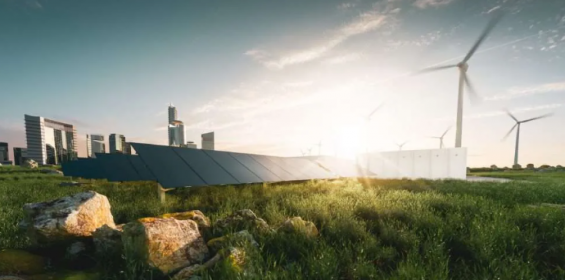Remote telemetry: Managing a changing energy landscape
Published: 28 September, 2022
PWE looks at why remote telemetry units (RTUs) and advanced software will be crucial for managing more diverse, renewable energy sources.
The ongoing conflict in Ukraine has highlighted the need for the UK and European Union (EU) to move away from gas and to embrace renewable energy sources on a much wider scale — with European Commission President Ursula von der Leyen announcing plans to “get rid of the dependency on Russian gas and go deep into the renewables.”
Europe’s plans, as outlined by President von der Leyen, will include procuring liquified natural gas (LNG) from alternative “reliable suppliers,” plus a drive towards renewable energy sources and hydrogen.
Alternative energy sources like wind, wave, marine, hydro, biomass and solar are becoming more widely used. According to the International Energy Agency (IEA), 29% of electricity generated in 2020 was from renewable sources, a two per cent increase on the previous year.
This highlights that grid operators and managers must be prepared for a further rise in renewables. But, although renewable energy is beneficial for the environment, it poses unique energy management challenges
More sources, more problems
Due to the low-or-medium voltages used to run renewable sources like wind and solar, they can be unpredictable. Because these energy sources depend on the sun shining periodically, or the presence of wind, they feed energy to the grid more intermittently. This can lead to disruptions.
Conventional remote monitoring systems are based on a standard template, making it harder for them to analyse fluctuating data. Any alterations to these operating systems or drives are not only time-consuming but can also fall behind the demands of renewable sources.
To address these unique challenges, remote monitoring systems must therefore be reliable and flexible.
Chain of cables
RTUs offer an effective hardware solution. They have been used in energy grids for years to capture, store, and analyse data collected from physical assets in the network.
For instance, Distrigas, the leading gas provider in Belgium, uses Ovarro’s TBox LT2 RTUs to provide important data on gas volumes at 550 outstations throughout its network. Each TBox connects to the existing meter, to a turbine, and a pressure and temperature transducer.
RTUs will also be invaluable in smart grids. Smart grids rely on data collected by monitoring equipment to predict problems or identify them quickly before they become more severe. Effective use of RTUs can also help grid operators take preventative or remedial action against these incidents.
An electricity grid functions like a chain of cables, where a failure in one link can render the entire chain ineffective.
To ensure reliable running and improve security, Matthew Hawkridge, Chief Technology Officer at Ovarro says his company offers remote monitoring and supervisory control and data acquisition (SCADA) systems designed for distribution grids, such as the Datawatt Smart Grid (DSG) series for the water, energy and industrial markets. The DSG series is flexible, with a range of protocols that can be implemented in real-time including IEC104, COAP and Modbus. Other protocols are available on request.
Go deep into renewables
The DSG RTUs collect and manage data, before making it available to other systems for analysis. Hawkridge says that Ovarro can also assemble bespoke cabinets with a combination of its own products and third-party hardware. This offers a complete and easy-to-install solution, and an improvement over traditional systems that are difficult to implement.
Access to data makes grids smart. Therefore, RTUs and SCADA systems are essential for effective modern smart grids, to collect and analyse the large amounts of process data needed for improved decision making.
As the EU comes to rely more heavily on renewable energy sources, optimised distribution management will become essential. Automation offers one solution — with RTUs like the DSG series being able to collect, interpret and act on data produced by lowand medium-voltage renewable energy sources.
These technologies can support the EU on its journey to net zero and help Europe, in the words of President von der Leyen, “go deep into the renewables.
https://twitter.com/ovarro_ltd
https://www.linkedin.com/company/ovarro/







